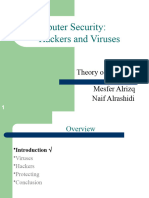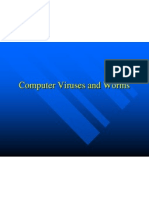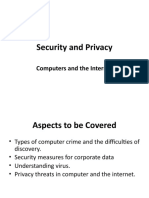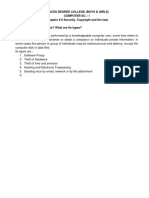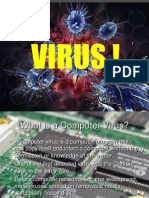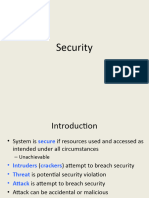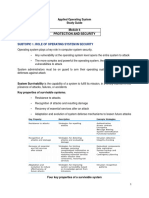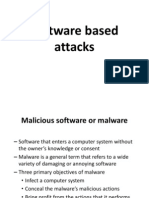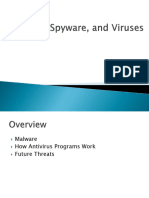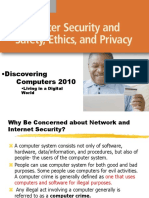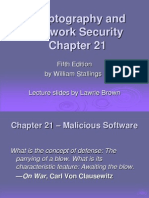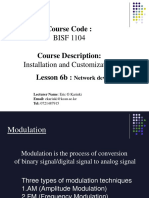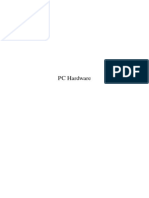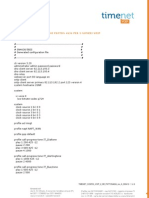0% found this document useful (0 votes)
100 views44 pagesTopic 7a Computer Security PDF
This document discusses computer security and threats. It covers various types of threats like interruption, interception, modification, and fabrication. It also discusses different computer system assets that are vulnerable like hardware, software, data, and communication networks. It describes different malicious programs like viruses, worms, Trojan horses, and zombies. It discusses different approaches to computer security like access control, malicious code detection, and antivirus software.
Uploaded by
Theo NdedaCopyright
© © All Rights Reserved
We take content rights seriously. If you suspect this is your content, claim it here.
Available Formats
Download as PDF, TXT or read online on Scribd
0% found this document useful (0 votes)
100 views44 pagesTopic 7a Computer Security PDF
This document discusses computer security and threats. It covers various types of threats like interruption, interception, modification, and fabrication. It also discusses different computer system assets that are vulnerable like hardware, software, data, and communication networks. It describes different malicious programs like viruses, worms, Trojan horses, and zombies. It discusses different approaches to computer security like access control, malicious code detection, and antivirus software.
Uploaded by
Theo NdedaCopyright
© © All Rights Reserved
We take content rights seriously. If you suspect this is your content, claim it here.
Available Formats
Download as PDF, TXT or read online on Scribd
/ 44
